Melrose is a town in the southeast of Scotland, very close to the border with England, which was born in the year 1136 from the foundation of a Cistercian abbey by King David I. The monastery, damaged by the independence wars, was abandoned after the Reformation but its ruins still present an imposing aspect, especially the church, which continued to be used for parish worship until 1810. Several Scottish monarchs and nobles have their tombs there and of all of them, who makes the place famous is not a whole body but only one heart:the one that allegedly belonged to Robert The Bruce.
The abbey, which like all the Cistercian abbeys was dedicated to Santa María, was burned down by the Englishman Richard II in 1356, being rebuilt in the Gothic style. Its beauty, resistant to the passage of time, means that it continues to receive tourist visits today, under the management of Historic Environment Scotland, the body in charge of national heritage. But in 1996 something happened that made his popularity explode. During archaeological excavations, a small conical casket, made of lead, came to light bearing a copper plate with a surprising inscription:The enclosed leaden casket containing a heart was found beneath Chapter House floor, March 1921, by His Majesty's Office of Works (This lead chest containing a heart was found under the Chapter House floor, March 1921, by Her Majesty's Office of Works.)
The Office of Works was an institution created by the Crown in 1378 to supervise the construction and maintenance of the castles. In the mid-nineteenth century, it was integrated into the Office of Woods, Forests, Land Revenues, Works and Buildings to, in 1940, become part of the Ministry of Works. Evidently, work had been carried out in the monastery and in the course of it this unexpected discovery was made. Unexpected and important, because it was sent to Leith to be studied by archaeologists and when they opened it, they found liquid tar, whose bath was used to preserve bodies in the Middle Ages; in fact, something like a prune floated in it. Everything seemed to indicate that it could be the heart of Robert the Bruce, since it is known that this organ was buried in Melrose Abbey.
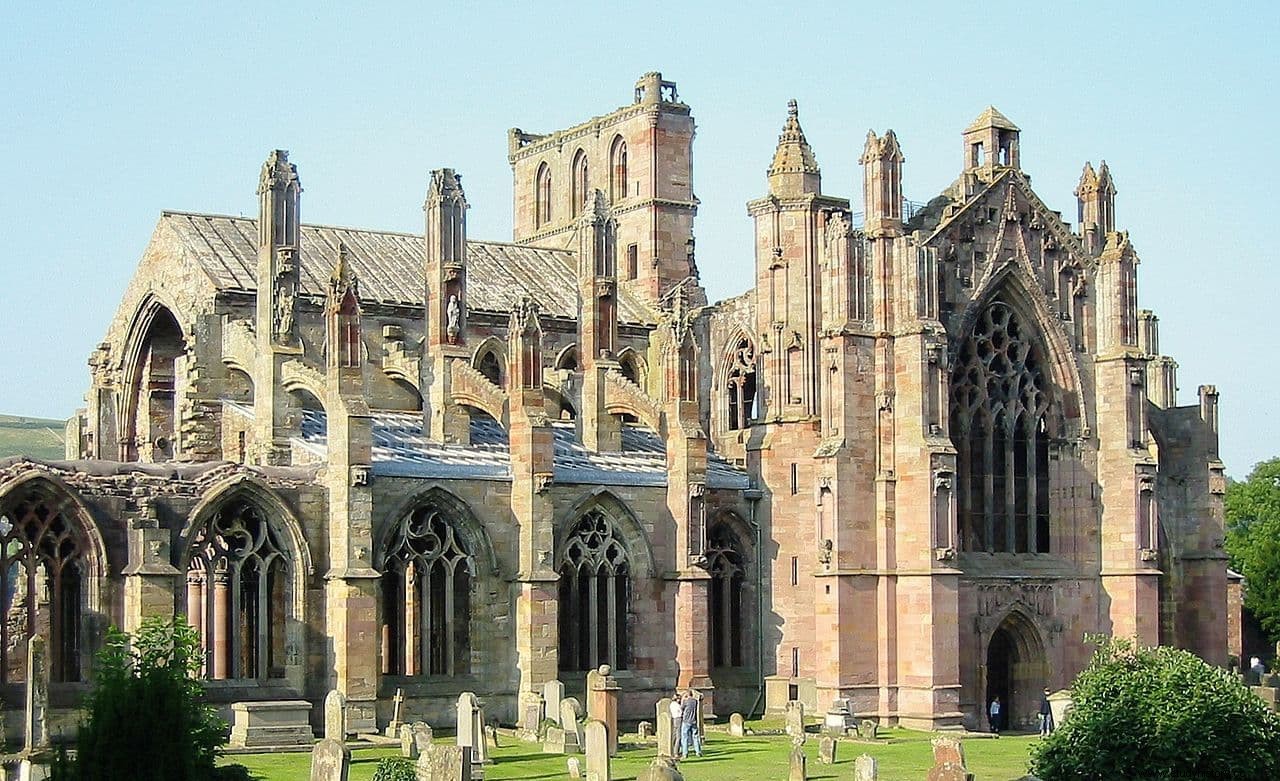
The name Robert the Bruce is now familiar to many people - not just the Scots - thanks to the magic of cinema. The success of the movie Braveheart made William Wallace, the hero par excellence of the country's independence, universally known, but also the character played by the actor Angus Macfayden, who would become king of an independent Scotland between 1306 and 1329. And it was him, by the way , and not Wallace, who was nicknamed Braveheart (Brave Heart). The reasons for this nickname were several and were based both on the historical events that he starred in and on what archaeologists had in his hands in 1996.
Robert is believed to have been born at Turnberry Castle, in the county of Ayrshire, in 1274. He was the son of Robert VI, a great-great-grandson of the aforementioned King David I married to Countess Marjorie of Carrick. Therefore, blue blood ran through his veins and he probably received an education accordingly, since he was fluent in several languages (French, Norman, Latin and probably English), so he would know how to read and write, as well as having knowledge of politics, law, philosophy and history. Likewise, he would have been trained as a knight, which meant mastering weapons, horsemanship and poetry.
The throne was occupied by John Balliol, from a different branch of the family, despite the fact that Robert's father claimed the rights to him. Since he was not listened to, he swore allegiance to Edward I of England while the monarch allied himself with France. Both went to war in 1296, the same year that Robert married Isabella de Mar. After an attack by several Scottish counts on the Bruce domains, Edward launched an invasion that led to the overthrow of John Balliol, leaving Scotland under English rule. The following year a rebellion broke out and Robert, acting apart from his father, joined her. The insurrection was crushed but he was pardoned.
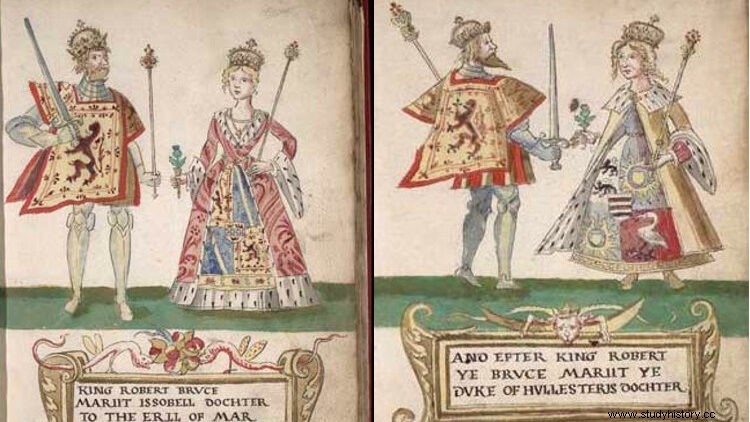
This tug of war lasted several years, forcing the English sovereign to launch several campaigns. Meanwhile, Robert, who was left a widower and remarried (this time to Elizabeth de Burgh), continued to swim between two waters, maintaining his links with the rebels but, at the same time, following a policy of collusion with the invaders. Because in 1304 Edward had managed to subdue the entire country except for William Wallace, who nonetheless ended up being defeated and executed the following year. Looking strong, Edward decided to put an end to the ambiguity of Robert, who was now hailed as a candidate for the throne of Scotland.
That definitely inclined him to fight for it, ordering the assassination of the other candidate, John Comyn, and confronting his former ally, who wrested the Scot's excommunication from the Pope. This did not prevent Robert the Bruce from being crowned at Scone in 1306 -despite the fact that the famous coronation stone had been taken by Edward to London- and immediately afterwards starting the war against the English. Things did not go well and he reaped defeat after defeat, to the point that he was captured. But then chance intervened -or destiny- and everything changed:the English sovereign died and his son, Edward II, left Robert free. The course of the conflict was reversed and the Scots began to prevail, first through guerrilla actions but later also in the successive conquest of castles.
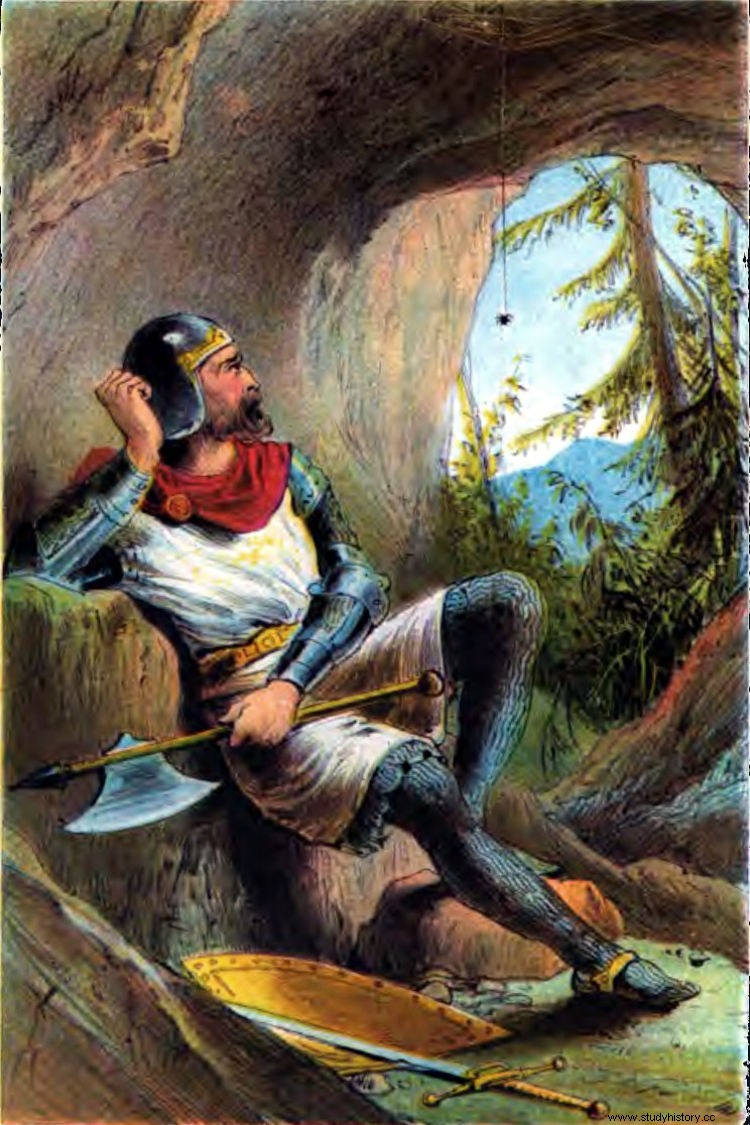
This gave rise to a curious legend, collected by Walter Scott in his work Tales of a grandfather , according to which the character, fleeing from the defeat suffered in Methven, hid in a cave and there he saw a spider that failed twice when it came to weaving its web but persisted and succeeded the third time, which would have inspired not to give up before the failures and to continue trying the fight until the final success. In that sense, Robert the Bruce had overcome the losing streak and was now in a position to reverse the situation. All that remained was to win a pitched battle that would be decisive, and the occasion came in 1314, at Bannockburn.
The resounding Scottish victory, which Edward II narrowly escaped, even led Robert to occupy English lands and parts of Ireland, where he too was proclaimed king in 1316 though he eventually had to withdraw. Later, in 1328, Pope John XXII pardoned the excommunication. By then he was already sick with an uncertain condition that has traditionally been identified as leprosy but whose true nature is not exactly known, since the analysis of his bones reveals no trace of said disease. Sensing that he had little life left, he wanted to recover an old vow that he had made long ago:to go on a crusade to the Holy Land. He didn't have time to do it and that was the origin of the 1996 find at Melrose Abbey.
And it is that Robert died in Cardross in 1329. His viscera were removed and buried in the chapel of Saint Serf, where he used to pray, while the rest of the body was embalmed and transferred, with great pomp and inside a wooden coffin leaded, to Dunfermline Abbey. He was buried in the crypt, in an elegant marble tomb with the epitaph «Hic jacet invictus Robertus Rex benedictus qui sua gesta legit repetit quot bella peregit ad libertatem perduxit per probitatem regnum scottorum:nunc vivat in arce polorum "(Here lies the invincible blessed King Robert / Whoever reads of his deeds will repeat the many battles he fought / By his integrity he led the Kingdom of Scots to freedom:may he now live in heaven.)
But something was still missing. In order to fulfill the last wish of the king, his relatives organized an expedition that was to take his heart to Jerusalem, to be buried in the Church of the Holy Sepulchre. The organ was encased in a silver urn which Sir James Douglas, his most esteemed companion-in-arms, hung around his neck, setting out for the Holy Land at the head of a party of six knights and twenty-six squires. They traveled from Montrose to Flanders, where they were joined by more men, and then learned that King Alfonso XI of Castile had just ascended the throne on his coming of age and had begun a campaign against the Kingdom of Granada. The Scots decided to travel to the Iberian Peninsula and collaborate.
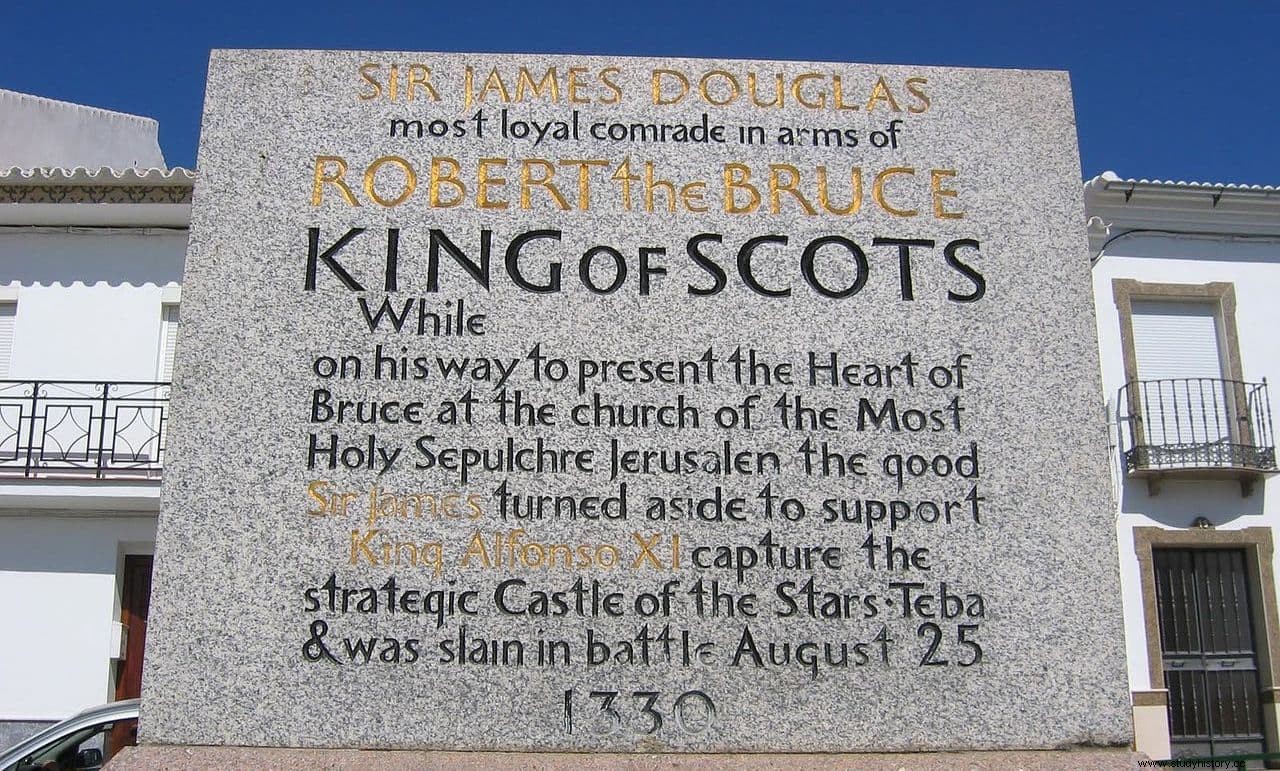
Alfonso received them with honors in Seville and incorporated them into his army, which was marching against the Castillo de la Estrella, in Teba (Málaga), a place on the border with the Andalusian domains. Mohammed IV, the Nasrid sultan, approached the battle indirectly, so that the actions took place for several days without any clash being decisive, until he tried to drag the Christians into a trap. To do this, he divided his troops into two, one of which was to lure the enemy away from his camp so that the other, properly hidden, could assault him. Alfonso noticed the ruse and did not bite but Douglas and his companions fell squarely.
Through the tactic known in Spanish as tornafuye , a typical movement of the Berbers in which they simulated a retreat so that the adversary would pursue them by abandoning their positions and then surround him, Mohammed IV's cavalry managed to get the Scots to go after them. In addition, they did it alone, since, although the Castilians recognized the trick, they could not stop their allies. These, effectively, were surrounded and annihilated for the most part. Dubious lore has it that Douglas, before he expired, threw the locket, shouting:"Now show us the way, since you have won, and I will follow or die!" .
Whether that anecdote is true or not, the Muslims collected the relic and gave it to the sultan who, knowing the story, followed the chivalric dictates of the time by returning the hearts and bodies of the Scots to King Alfonso; he also freed the only two survivors, William Keith of Galston and Simon Lockhart. And so, while Castile, Aragon and Granada signed the Peace of Teba, which agreed to a four-year truce and the payment of pariahs (tributes), the mortal remains of Douglas and the others, together with the heart of Robert the Bruce, undertook the return to his country. Following the last wish of the monarch, the traveling organ was taken to Melrose Abbey.
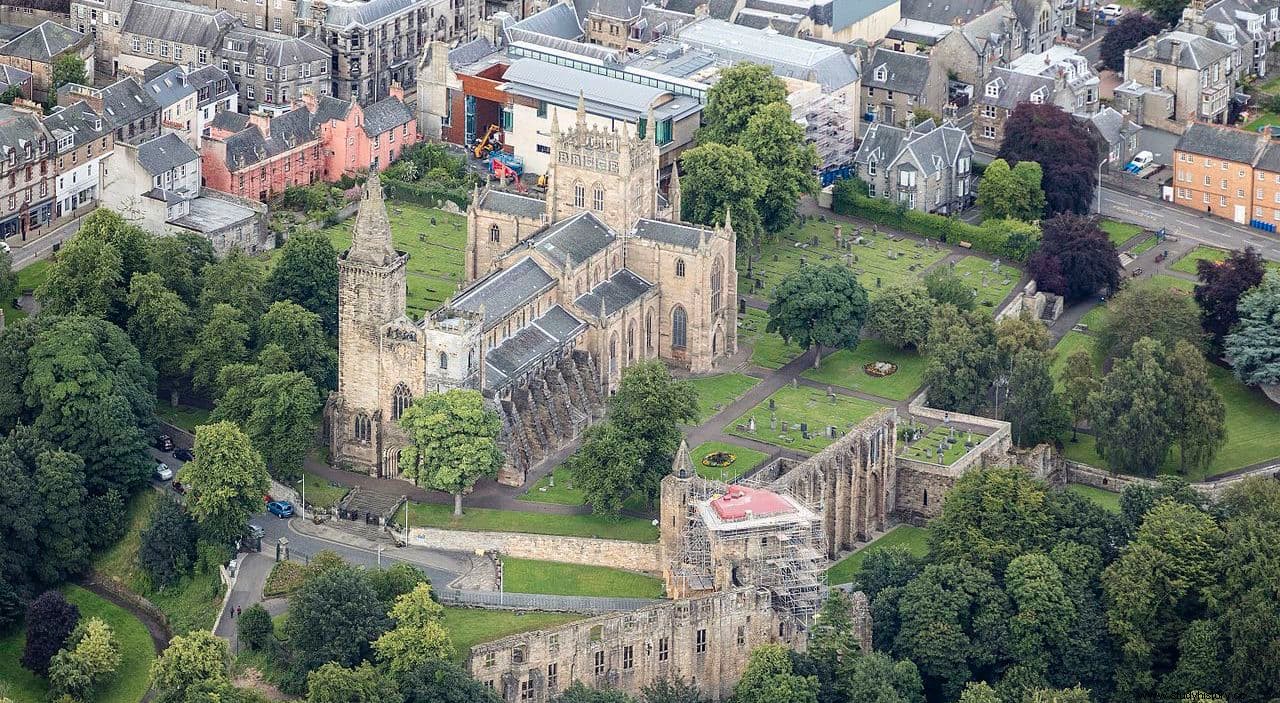
There he was buried and remained until, as we saw, they exhumed him in 1921 to put him in the lead box, put the plaque on him and bury him again. When he was found again in 1996, it had been exactly one hundred and seventy-eight years since the tomb where the rest of the body rested had been discovered in the other abbey, Dunfermline, during the construction of a new parish church over the chancel. Analysis of the bones revealed that the sternum had been sawn open, which coincided with the removal of the heart and led to its identification. By the way, he was a man of more than considerable height for his time:1.85 meters.
Before the remains were buried again, several fragments of bone and teeth disappeared, presumably looted by some of those who had the opportunity to see them those days; but, in return, today's visitors can see the plaster cast that was made of the skull, because, apart from serving to reconstruct his face, it is exhibited today in situ . The fact is that the history of the heart, questioned for a long time as the fruit of the imagination of some authors (specifically the Scottish poet John Barbour and the Flemish chronicler Jean Le Bel, both from the 14th century), could be true, as in fact already indicated the papal bull of Boniface VIII authorizing the burial of the two parts of the body separately.
This does not mean for sure that it is the heart of Robert the Bruce, since the DNA has degraded and an analysis would not be conclusive. In addition, neither the place where he was had any indication or royal characteristics (the monarchs used to be buried under the altar, not in the Chapter House). Above are at least two other hearts buried there, as it was a relatively popular practice in its time and it was performed on Douglas himself. That is, there is a one in three chance.
Fonts
The Bruce (John Barbour)/Les vrayes chroniques (Jean Le Bel)/On the trail of Robert the Bruce (David R. Ross)/Robert the Bruce. King of the Scots (Michael Pennman)/The Melrose Casket and Robert The Bruce (Danielle Dray in Historic Environment Scotland)/Robert the Bruce. King of Scots (Ronald McNair Scott)/Wikipedia
